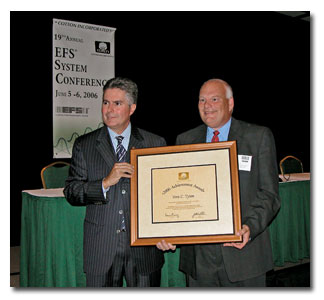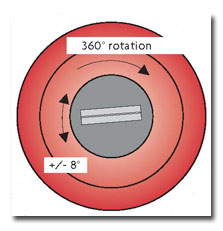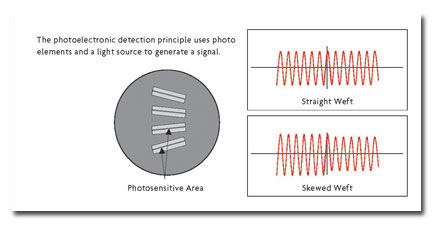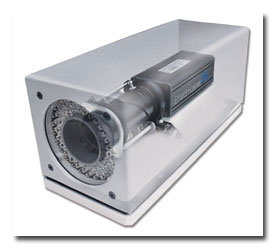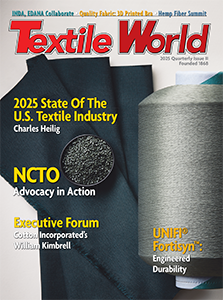Karin Malmstrom
has joined
Cotton Council International, Washington, as its China and Hong Kong director.
Midland, Mich.-based
The Dow Chemical Co. has appointed President and CEO
Andrew N. Liveris
chairman of the board, and
William H. Weideman
vice president and controller.
Greenville-based
Batson Group Inc. has named
Charles Little
group manager with responsibility for capital equipment sales and marketing; and has
hired
Bruce Kalley
as service and spare parts manager, with responsibility for service and spare parts sales
for original equipment manufacturers.
Performance Fibers Inc., Richmond, Va., has named
James A. Johnson II
vice president, chief information officer, with responsibility for the company’s global
Information Technology group.
Precision Custom Coatings LLC, Totowa, N.J., has hired
Moe Kovangji
as general manager.
Paris-based
Lectra has appointed
David Rode
president of Lectra USA Inc., where he will be responsible for all company business in
Canada, Mexico, the United States and the Caribbean. The company also named
Guido Turco
product lifecycle management business development manager for Italy.
Tolland, Conn.-based
Gerber Technology has presented the Gerber WebPDM® Achievement Award to
Christina Wong
, a recent graduate of the Fashion Institute of Design and Merchandising’s International
Manufacturing & Product Development program. The company also has welcomed
Linna Lin
, a customer solutions center coordinator, as its 200th full-time employee in greater
China.
Dalton, Ga.-based
Thomas Industries LLC CEO
Jerry L. Thomas
has assumed the role of board co-chairman and will head a special committee tasked with
identifying strategic business opportunities. Also,
Dick Bierie
now is president, Marketing & Sales.
WestPoint Home Inc., West Point, Ga., has named
Chris N. Baker
COO.
Kellwood Co., St. Louis, has appointed
Jeffery Streader
president, Operating Services Division;
Gail Cook
, president, David Meister brand; and
James Weinberg
CEO, Halmode suit and dress division.
Blue Bell, Pa.-based
Acme-Hardesty Co. has named
Cynthia A. Cox
president and promoted
Wulan Gerile
to global sourcing manager.
Emeryville, Calif.-based
Nano-Tex Inc. has promoted
James P. Curley
to president and CEO, and named him to the company’s Board of Directors.
Mark Welles
has joined
TradeCard Inc., New York City, as vice president of sales in Asia Pacific.
Consoltex Inc., Quebec, has named
Sirio De Luca
president, Commercial Operations.
Jessica Franken
, associate director of government affairs for the
Association of the Nonwovens Fabrics Industry, received the Alexis de Tocqueville
Award upon her recent graduation from Fairfax, Va.-based
George Mason University’s School of Public Policy.
Omnova Solutions Inc., Fairlawn, Ohio, has elected
Robert A. Stefanko
to its Board of Directors.
The
American Association of Textile Chemists and Colorists (AATCC), Research Triangle
Park, N.C., has named the following Concept 2 Consumer/Computer Integrated Textile Design
Association design competition winners: Print Design, Interior Design —
Andrea Singer
, Philadelphia University, first place, and
Elizabeth Newcomb
, North Carolina State University (NCSU), second place; Print Design, Apparel Design —
Carla Rickenbacher
, Drexel University, first place, and
Christine Schmitt
, Savannah College of Art and Design, second place; Product Design, Interior Design —
Jessica Roush
, NCSU, first place, and
Elizabeth Newcomb
, second place; and Product Design, Apparel Design —
Colleen Keller
, Cornell University, first place, and
Cora D. Smith
, NCSU, second place. AATCC also presented awards in its inaugural Engineering Design
Competition, Medical/Biomedical Fibrous Structures Area to
Harold D. Dillow
,
David J. Janowiecki
,
Chloe Zhuang Wan
and
Marc R. Williams
, University of Kentucky, first place; and
Hang Liu
and
Hong Yu
, University of Georgia, second place.
Precision Roll Grinders Inc., Allentown, Pa., has named
William “Bill” Cargile
general manager of its Texarkana facility.
William E. Giblin
, president and CEO, Tweave Inc., Norton, Mass.; and former chairman, National Textile
Association, Boston, recently received an honorary Doctor of Business Administration degree from
the
University of Massachusetts Dartmouth.
American Fibers & Yarns Co. (AF&Y), Chapel Hill, N.C., has hired
Roger Morelock
as vice president of operations for its Bainbridge, Ga., facility.
The Board of Directors of Dalton, Ga.-based
Shaw Industries Inc. has elected
Vance Bell
to succeed Robert E. Shaw as CEO effective Sept. 1, 2006. Shaw, a co-founder of the
company, will remain on the board. The board also has elected
Randy Merritt
president of the company. Merritt succeeds Julian Saul, who recently retired.
July/August 2006

